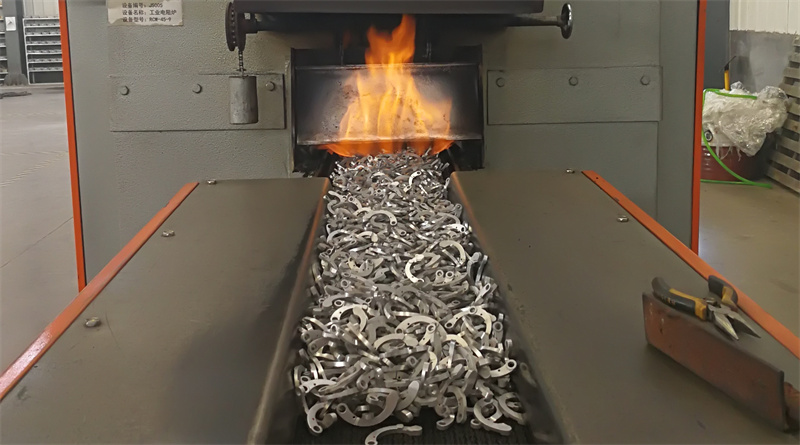Powder metallurgy gears and customized products, according to different product performance requirements, are similar to ordinary heat treatment. After induction heating and quenching, they must be tempered to reduce internal stress and quenching brittleness, stabilize the structure, and achieve the required mechanical properties. Low temperature tempering is usually performed. Three types of induction tempering, furnace tempering and self-tempering are often used in production.
①Induction tempering The quenched workpiece is re-inductively heated to achieve the purpose of tempering, that is, after the workpiece is heated by the inductor and spray-cooled, induction heating and tempering should be performed immediately. Due to the short heating time, the microstructure has a large dispersion. It can obtain high wear resistance and high impact toughness, etc. It is especially suitable for tempering of shafts, sleeves and other parts that are continuously heated and quenched.
②Tempering in the furnace The workpiece is tempered in a pit furnace, oil furnace or other equipment after high-frequency quenching. The tempering temperature should be determined according to the required hardness and performance, and the tempering temperature and Time, as high carbon steel tools and measuring tools, medium carbon steel or medium carbon alloy steel gears and spline shafts, alloy cast iron camshafts and other parts, require a lower quenching cooling rate, often using immersion cooling in water or water. Most of them are tempered at 150 ~ 250 ℃, and the time is generally 45 ~ 120min. It is mostly used for tempering of workpieces with small size, complex shape, thin wall and shallow hardened layer to ensure the high hardness and wear resistance of the surface of the parts. Require.
③Self-tempering Stop cooling after spraying or immersion cooling, and use the heat existing inside the quenched workpiece after quenching to make the quenching zone rise to a certain temperature again to meet the requirements of tempering, and its temperature should be higher than the tempering temperature in the furnace. Generally, the inner surface of the parts has a higher temperature after cooling for 3 to 10 seconds. As the time for self-tempering, the large parts are 6s and the small ones are 40s to complete the self-tempering.

Post time: Mar-31-2022